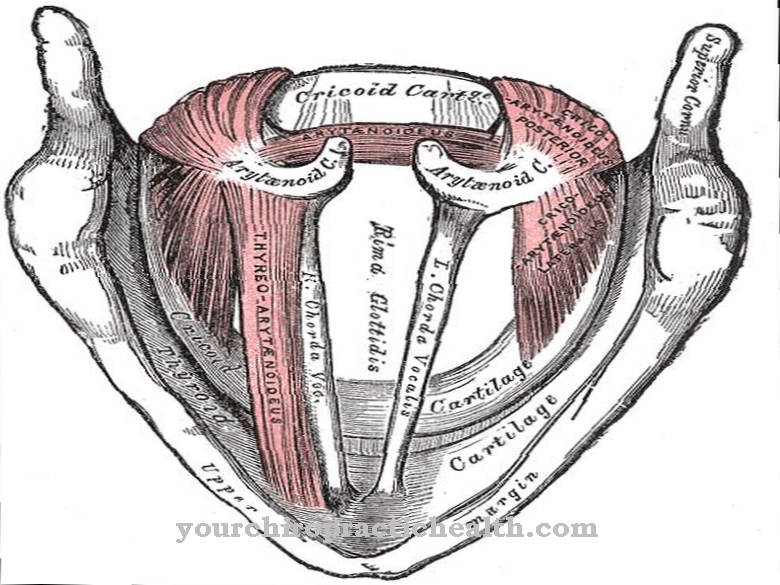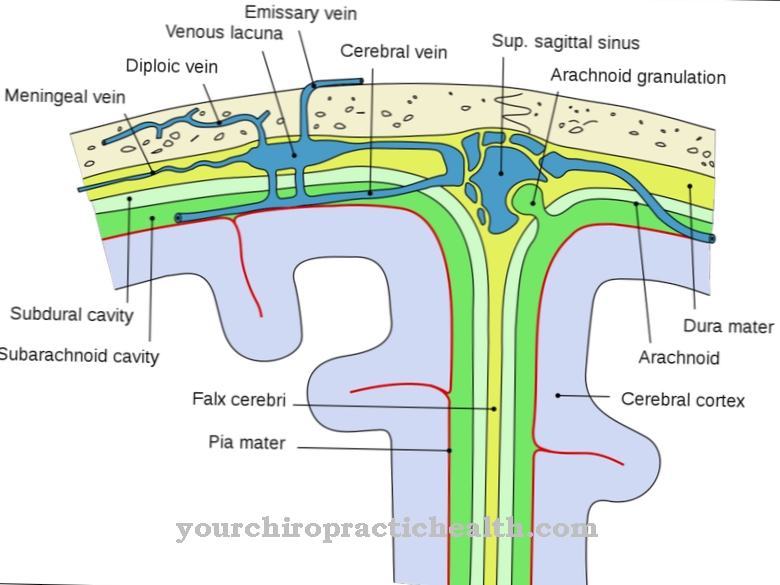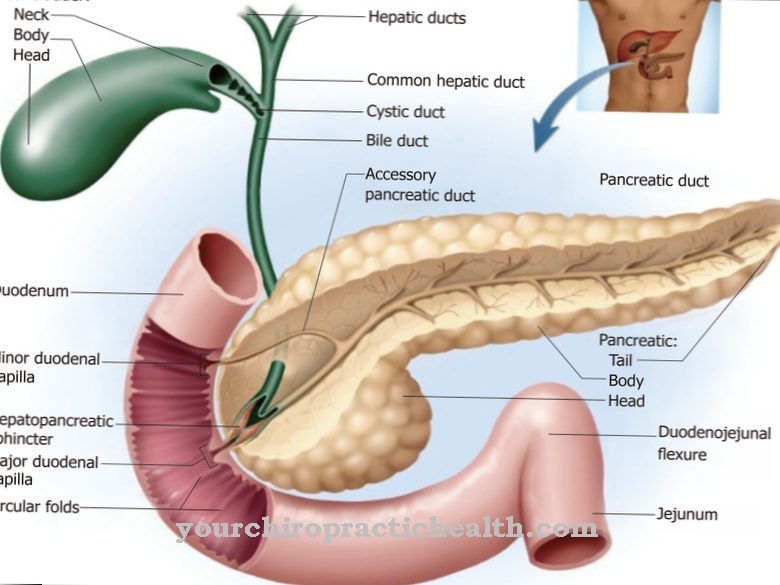The lower part of the skull is called Skull base designated. The brain rests on its inside. A total of twelve cranial nerves and blood vessels enter the neck and the facial skull through openings in the base of the skull.
What is the base of the skull?
The skull base represents a cranial fossa on which the brain rests. It is also known as the base cranii. In English it is called scull base.Through the base of the skull, the brain is connected to the neck and the skull via several nerves and blood vessels. The inner skull base (base cranii interna) is divided into the anterior, middle and posterior cranial fossa. It is the side facing the brain.
The outer skull base (base cranii externa) is in turn the side facing away from the brain. Strictly speaking, it represents the facial skull. According to a strict definition, only the base cranii interna is called the skull base. Overall, it is made up of five bones, namely the frontal bone (Os frontale), the ethmoid bone (Os ethmoidale), the sphenoid bone (Os sphenoidale), the occiput (Os occipitale) and the temporal bone (Os temporale).
Anatomy & structure
The inner skull base consists of the anterior cranial fossa (Fossa cranii anterior), middle cranial fossa (Fossa cranii media) and the posterior cranial fossa (Fossa cranii posterior). The anterior cranial fossa is composed of the ethmoid bone and the temporal and frontal bones placed on the side. The anterior cranial fossa is separated from the middle cranial fossa (fossa cranii media) by the small wing of the sphenoid bone.
The middle cranial fossa houses part of the brain stem, the central part of the brain and the temporal lobes of the cerebrum. The middle cranial fossa is divided into two halves by the so-called Turkish saddle. In the middle of the Turkish saddle (Sella turcica) there is a recess for the pituitary gland (fossa hypophysialis). The posterior cranial fossa (fossa cranii posterior) consists of the three cranial bones occipital bone (os occipitale), sphenoid bone (os sphenoidale) and temporal bone (os temporale). In the middle of the posterior cranial fossa is the occipital opening (foramen magnum). The medulla oblongata leaves the interior of the skull through the foramen magnum and merges into the spinal cord. In the posterior fossa there are additional passages for cranial nerves and arteries.
Function & tasks
The skull base has the task of protecting the brain from external influences. At the same time, it has many passages for cranial nerves and blood vessels, which keep the brain in contact with the rest of the body. Without the base of the skull, however, the brain would very easily suffer vibrations and lose its functionality. For nerves and blood vessels to come into contact with the rest of the body's organs, a total of twelve passages through the base of the skull are necessary.
The optic canal is a passage in the anterior sphenoid bone of the middle fossa. Both the optic nerve and the ophthalmic artery pass through this opening. Both are responsible for taking care of the eyes. The hypoglossal nerve, which is responsible for the motor function of the tongue, passes through the hypoglossal canal. The internal jugular vein (Vena jugularis interna) enters the neck through the jugular foramen (the throttle hole). The internal carotid artery (internal carotid artery) passes through the carotid canal. A bony canal in the temporal bone, the musculotubary canal, serves as an opening for the eustachian tube. The purely sensitive maxillary nerve leaves the cranial cavity through the foramen rotundum.
Further penetration points in the skull base are the foramen ovale, the foramen spinosum and the foramen lacerum for important nerve cords as well as the porus acousticus internus for the auditory canal and the foramen alare caudale for the arteria maxillaris.
Diseases
A fracture of the skull base is a serious disease of the base of the skull. A fracture of the base of the skull always arises after strong violence in the head area, mostly through accidents but also through blows or kicks. This leads to fractures in the anterior, middle or posterior fossa. The frontobasal (nose and skull base) and laterobasal fractures (ear and skull base) are the most common.
Typically, brain fluid and blood leak from the nose and ear. Due to the actual trauma or bleeding into the brain, occasional clouding of consciousness and neurological failure symptoms occur. Since many nerves pass through small openings in the base of the skull, they can become trapped. This can lead to paralysis and loss of senses. A fractured skull base is a highly life-threatening condition, the outcome of which cannot be foreseen. However, there are also diseases of the skull base that are characterized by growth processes that occupy space in this area. Usually it is benign skull base tumors.
Despite their benign nature, these tumors can cause considerable symptoms. They are able to destroy the bony structures of the skull base and to grow around the cranial nerves or blood vessels. When cranial nerves are affected, symptoms such as visual disturbances, smell and taste disturbances, paralysis of the facial muscles, facial pain or numbness in parts of the face, and hearing loss can occur. Furthermore, tinnitus, dizziness, swallowing disorders or weakness of the facial, head and shoulder muscles can also occur. Tumors at the base of the skull are not always responsible for these symptoms. Inflammation and injuries in this area are also possible causes.
The examination is carried out using imaging methods such as MRI or CT. In the event of injuries, action must be taken immediately. The benign tumors should only be treated surgically if the quality of life is severely impaired. Sometimes growth-inhibiting drugs can stop the tumor from growing.
























.jpg)



